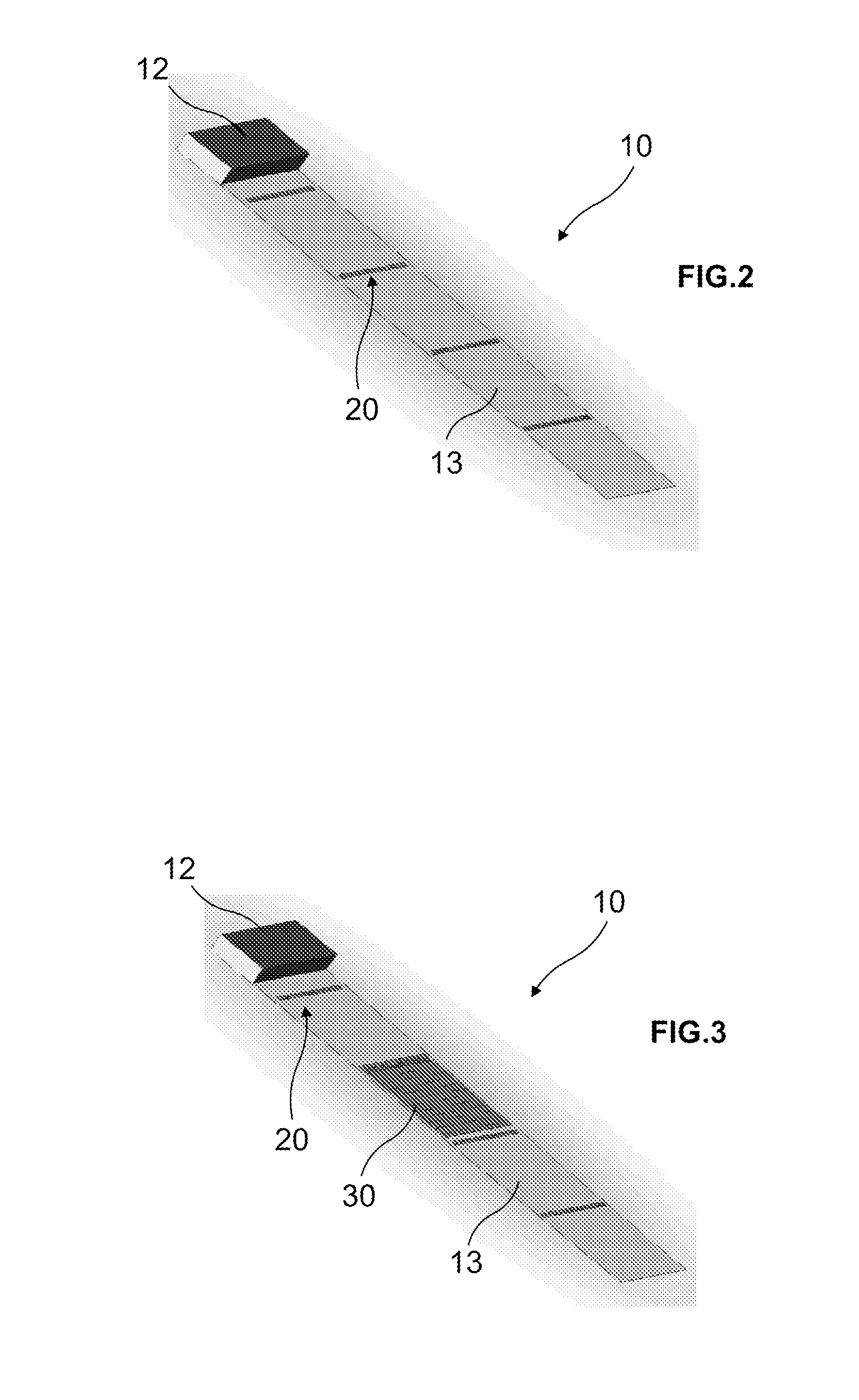Device for detecting highly energetic photons
a high-energy photon and detector technology, applied in the field of positron emission tomography, can solve the problems of limited energy resolution, reduced the ability to remove scattered events, and error in the projection of the line of response, so as to achieve the effect of considerably worse spatial resolution
- Summary
- Abstract
- Description
- Claims
- Application Information
AI Technical Summary
Benefits of technology
Problems solved by technology
Method used
Image
Examples
Embodiment Construction
[0061]In the following, a preferred embodiment of the device for detecting highly energetic photons according to the invention will be described. Next, preferred embodiments of a module (comprising a plurality of these devices), a system (comprising a plurality of modules), a PET scanner, a gamma camera and a Compton camera according to the invention will be described.
[0062]In FIG. 1a, a preferred embodiment of a device according to the present invention is shown. The device 10 for detecting highly energetic photons comprises four modular pixelated room temperature solid-state detectors 11 in a tiled / stacked scheme; four ASICs (application-specific integrated circuit), one for each solid-state detector 11, acting as readout elements for them; an input / output element connector 12 connected to the ASICs for data input and output (that is, mainly for obtaining the values generated by the ASICs from the solid-state detector captured parameters); and a kapton layer 13 acting as a base la...
PUM
 Login to View More
Login to View More Abstract
Description
Claims
Application Information
 Login to View More
Login to View More - R&D
- Intellectual Property
- Life Sciences
- Materials
- Tech Scout
- Unparalleled Data Quality
- Higher Quality Content
- 60% Fewer Hallucinations
Browse by: Latest US Patents, China's latest patents, Technical Efficacy Thesaurus, Application Domain, Technology Topic, Popular Technical Reports.
© 2025 PatSnap. All rights reserved.Legal|Privacy policy|Modern Slavery Act Transparency Statement|Sitemap|About US| Contact US: help@patsnap.com



